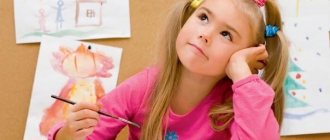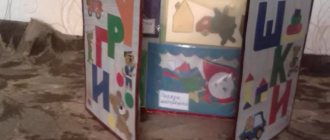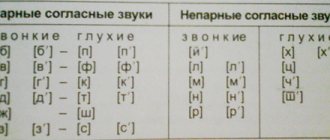PREREQUISITES FOR THE DEVELOPMENT OF DIRECTOR'S PLAY IN THE FIRST JUNIOR GROUP.
28.LEISURE GAMES IN THE FIRST JUNIOR GROUP. The development of cultural and leisure activities of children according to their interests allows each child to provide rest (passive and active), emotional well-being, and contributes to the formation of the ability to occupy themselves. The correct organization of cultural and leisure activities for children 2-3 years old requires the teacher to solve the following tasks: Promote the creation of an emotionally positive climate in the group and kindergarten, providing children with a sense of comfort and security. Involve children in participating in games, fun, entertainment, and holidays as much as possible. Develop the ability to monitor the actions of wind-up toys, fairy-tale characters, and respond adequately to them. Contribute to the formation of the skill of transformation into images of fairy-tale heroes. Celebrate holidays in accordance with the age capabilities and interests of children.
When conducting entertainment, you should consider some points: The theme of the entertainment should correspond to the interests of the children. It is necessary to strive to ensure that all children participate in the entertainment. Each child should be given the opportunity to show their independence.
The design of the hall or group should correspond to the theme of the entertainment. When organizing sporting events, it is necessary to take into account the possible load on children. Kids should not be overexcited, they should have fun and interest. Outdoor games that are already familiar to children should be played. It is advisable to prepare the attributes in advance, and when adding them to the group, play them out. This increases children’s interest in entertainment, promotes emotional uplift and the emergence of a motive for activity.
Theatrical entertainment holds a special place at this age. Children perceive the performance very emotionally and strive to take part in it. In this regard, it is recommended to adhere to the following rules: The performance is based on a fairy tale familiar to children and must correspond to the level of their development. When involving children in the performance, they are assigned actions that they can perform. It should be remembered that it is still difficult for a child to act and speak at the same time, so it is necessary use stage-by-stage performance of the role: first the action, then the words, or vice versa. The moments of the performance that the children liked can be repeated 2-3 more times.
Children show significant interest in fun, folk and verbal games, accompanied by hand movements. Kids really like entertainment using wind-up toys and surprise moments. Fun helps relieve fatigue, arouse interest and redirect children's attention.
When dramatizing a song, the main condition is that children know its content. You should not immediately teach children certain movements, but give them the opportunity to independently act to the lyrics of the song, that is, to show creativity. At the same time, in order to achieve what the teacher intended, figurative movements are first learned with the children. In addition, it is necessary to create an atmosphere adequate to the content of the song. In this regard, special importance is attached to attributes that colorfully complement the game and help the child enter into an artistic image.
When developing a holiday scenario, you need to make sure that it is close to a home holiday, without any over-organization. The leading role during the holiday belongs to the teacher, who, by participating in all the children’s activities, infects them with a positive emotional attitude. SAMPLE LIST OF ENTERTAINMENT AND HOLIDAYS. Holidays. “New Year”, “Autumn”, “Spring”, “Summer”, “Mother’s Day”. Themed holidays and entertainment. “Autumn”, “Sun-bucket”, “Mishka’s birthday”, “My favorite toys”, “Bunnies in the forest”, “Fun games”, “Winter’s tale”, “Musical toys”. Theatrical performances. Puppet theater: “The Goat Bubenchik and his friends”, T. Karamanenko; staging Russian adv. fairy tales: “Cheerful Bunnies”, L. Feoktistova; “Ladushki visiting grandma”, “In grandma’s yard”, L. Isaeva. Stories with musical illustrations. "Birds", music. G. Frida, “Festive Walk”, music. An. Alexandrova. Singing games. “Game with a bear”, music. G. Finarovsky; "Cat", music. An. Alexandrova, lyrics. N. Frenkel; “Who is good with us?”, Russian. adv. song. Dramatization of songs. "Cat and Kitten", music. M. Kraseva, lyrics. O. Vysotskaya; "Tumblers", music. 3. Levina; “In the middle of the yard there is an ice mountain”, music. E. Sokovnina; "Fun Train", music. E. Kompaneetsa. Sports entertainment. "We are brave and skillful." Fun. “Because of the forest, because of the mountains”, T. Kazakova; "Frog", Russian. adv. song, arr. Yu. Slonova; "Cat and Goat", music. C. Cui.
29.GAMES WITH NATURAL MATERIAL IN THE FIRST YOUNGER GROUP More K.D. Ushinsky wrote: “children do not like toys that are stationary, finished, well made, which they cannot change at will... the best toy for a child is the one that he can force to change in the most diverse way... for children the best toy is a pile of sand.” Games with natural materials - snow, water, sand, clay, grass, sticks, shells, pine cones, chestnuts, acorns, rose hips, maple seeds, linden seeds, ears, leaves, roots, bark, moss are excellent raw materials for crafts and games with them.
Games with natural materials have a wide range of influence on the mental and personal development of a child. They provide the child with sensory experience, develop analyzers, the sensory sphere, cognitive activity, higher mental functions and creative abilities. At the same time, observation and genuine interest in environmental phenomena develop, children acquire knowledge through independent search and research activities. The child’s first contacts with the outside world occur during daily walks. For the first time, the child notices that wet sand makes a cake, and dry sand makes a slide; that trees grow from the ground, and on their branches there are leaves and acorns; that if you pour water out of a watering can, a puddle forms that quickly disappears. How important it is for these small discoveries to happen every day, so that it becomes a need to find, notice, be surprised and rejoice, and most importantly, to gain your own unique experience of a child’s communication with the natural world.
Natural materials are regularly used in both individual and subgroup developmental play sessions. Children take a direct part in exercise games with sand and other bulk materials. Here it is necessary to observe the principle of the golden mean, and it is very important to maintain a balance between the child’s independence and the help provided to him by adults. Follow the child, but organize the environment around him in such a way that he wants to explore and study it. When organizing games with natural materials in a junior group, you need to pay attention to ensuring that all children actively participate in the game, so that each child has some task, so that everyone gets a role.
You can invite your child to repeat an action just performed by another child. Children usually enjoy this.
During games, it is necessary to familiarize children with generally accepted terms and their use in speech. Kids must learn to operate with such concepts as “color,” “shape,” and “size.” The teacher should give an example of the correct use of these words.
From the 1st junior group, children must be taught to use generally accepted definitions of the characteristic properties, qualities, characteristics of objects and phenomena.
During the game, children show a desire to take a good look at the object and play with it. Such interest can be used to introduce the child to some of the signs and properties of objects. So, if children, say, paid attention to the shape of an apple, you can invite them to roll it like a ball and stroke it to determine whether its surface is smooth.
Playing with sand and other materials involves performing various play activities in accordance with the stages of child development. It is recommended to play the game first with the child, telling him how to operate with game materials, and sometimes playing according to the “hand in hand” principle. This preliminary stage of joint action includes the child’s observation of the adult’s ways of acting, actions to imitate and follow the model proposed by the adult, and finally, independent actions that reflect the child’s own plan. In the process of preparing for play, the child should have the opportunity to independently examine the sand (or other bulk material) many times. Based on the use of sand and natural materials, it is possible to organize an incredible number of games and activities that have an educational and educational orientation and are designed to solve problems of cognitive and emotional development, the formation of spatial orientation. The most favorite games and play exercises with sand for children are often the simplest of them:
– children love “baking Easter cakes” and making figures using plastic molds in the form of animals, toys or fruits;
– examine and study sand, its properties, for example, pour sand, blow on it, interfere with improvised objects;
– play “hide and seek” by first burying and then digging up small toys and figurines;
– make houses and holes for animal figures;
– play “in the sea”, imagining that the sand is the surface of the water;
– pour sand with a scoop into a variety of containers (jars, boxes, flasks) and listen to what sounds it will make if you shake the jar;
– leave fingerprints, handprints and a variety of objects. This game can be made a little more complicated by asking the child what kind of object leaves prints;
– draw lines and basic geometric shapes on a flat sand surface;
– simple construction-story games require some development of fine motor skills. Even when building the simplest house, a child must be able to use a shovel in different ways (when raking sand, compacting, making a door, windows);
And this will contribute not only to the development of speech, spatial orientation and other child skills, but also to the skills of playing together.
Games with water are already held in the 1st junior group. These can be games in the group room and in the kindergarten area. Basins with water, various vessels (jars, jugs, glasses), funnels, toys and objects (floating and sinking) are used. Kids pour water from vessel to vessel, bathe dolls, get involved in simple experiments, getting acquainted with the properties of objects (float - drown). In the kindergarten area, children gather near a puddle, a spring stream, launch boats made of paper, bark, wood, throw various objects to find out which ones float and which ones drown. As a result, at a young age, children are led to understand that water flows. Games with snow have their own specifics. During walks in the cold winter, the teacher must take care that children do not become hypothermic. He can invite the children to collect snow into molds for colored ice floes or make a snow slide. Playing with snow requires mastering techniques for transforming it. The simplest technique is modeling. The teacher invites the kids to make lumps - snowballs, a bunny with ears, a carrot - to feed it. In the presence of children, the teacher makes a snowman, then everyone together makes his eyes, mouth, ears, and hair from pebbles, twigs, and dry twigs. This is how kids learn about the properties of snow.
⇐ Previous5Next ⇒
Recommended pages:
Consultation for educators “Directing games for children of primary preschool age”
Svetlana Savelyeva
Consultation for educators “Directing games for children of primary preschool age”
Director's games are a type of children's entertainment in which the child acts as a director , designing actions, figuring out what his toys will do, how his plot of events will develop, what his ending will be. It is the child himself who plays the role of each toy, comes up with names, chooses the main characters (positive and negative, and also establishes the main rules of the game . A preschooler’s director’s play is an individual game, in the process of which the child creates play situations with toys and substitute objects. In In this game, the child can be in the role himself, can only regulate the relationship between toys, like a director ... The plot can contain knowledge taken from cartoons, books, and stories of other people.
In a director's acting, speech is the main component. Such games allow the child to practice relationships, in communication in the process of actions with dolls, the child remains himself, he does not need to obey any general requirements, he comes up with his own rules and fulfills them himself, showing his creativity, his knowledge. A child’s play is a projection of his life onto new characters, or a direct interpretation of his fantasies.
Director's games appear first in a child's life. Already at the age of 1.5 - 2 years, you can watch how a child feeds his plush hares and bears, puts them to bed, rides on toy cars and takes them with him to kindergarten.
Director 's games include tabletop, shadow, flannelgraph theater; a child or an adult is not an actor, but creates scenes, plays the role of a toy character, acts for him, portrays him with intonation and facial expressions.
To conduct director 's games, special attributes are needed - heroes and scenery, with the help of which the child can reproduce the situation he has invented.
Directing games in kindergarten must be organized for the following purposes:
- teach children to communicate freely , easily enter into dialogue,
- show what speech etiquette is,
- will teach children to speak meaningfully , expressively, listen to their interlocutors,
— show children what it means to “make decisions”
, creating artificial situations in which it is necessary to make a choice.
In early preschool age, director's play is a prerequisite for plot-role-playing play . The game on personal experience, the plot is very poor. Children perform well only familiar actions (feeding a doll, putting it to bed, washing it, etc.)
.
Most often, children in the younger group have only two characters.
Children aged 3-4 years are not always able to independently play games . You should not impose your plot on them, but first the teacher should show a clear example, explaining how to play, control the characters and come up with a scenario.
Only by the end of the 4th year of life, the plots of fairy tales and cartoons appear at the heart of children’s play , and the number of characters increases. Role-playing and evaluative statements appear in speech (sly fox, evil wolf)
.
In order for the director 's game to develop:
- children should have knowledge and impressions about the life around them;
— there must be a good subject-development environment;
- there should be a well-selected variety of types of theatrical games;
— children of a teacher or another child who is good at playing .
Thus, the skillful organization of director's play , the creation of the necessary conditions for its development in early preschool age contribute to the acquisition of gaming skills by children, the development of the child's personality, and the formation of integrative qualities in the game; children’s ability children’s vocabulary .









